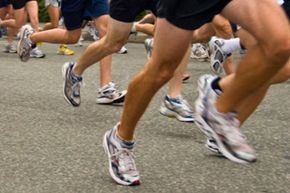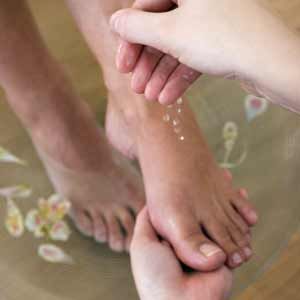Do...
...start off SLOW.
Walking is a good way to warm up. It also helps you lower the exertion level, which conserves resources for the end of your workout and reduces heat build-up.
...wear loose-fitting, light-colored clothing.
Loose-fitting clothes allow heat to escape. Try not to wear cotton clothing while running. There are several different synthetic materials that will wick some of the perspiration away from your skin, which reduces chafing and helps the body cool faster.
Advertisement
...drink cold water.
Cold water leaves the stomach of a runner quicker than any type of fluid. In addition, it produces a slight physiological cooling effect and an even greater psychological cooling effect.
...cool down.
Five to 10 minutes of light jogging/walking will slowly decrease body temperature and remove waste products from the working muscles. Also, stretching can be an appropriate way to cool down as it helps the muscles to relax and increase their range of movement.
...be ALERT!
Do not wear anything with headphones such as a Walkman or portable CD player. You will not be able to hear cars. Survival on our roads depends on being able to hear cars coming up from behind, around the corner ahead or just over the hill.
...keep your head up.
This will help keep the rest of your body in alignment, which will help prevent injuries. It will also allow you to run slightly faster (about 30 seconds for a 10K).
...watch your arms.
A huge mistake even among experienced runners is bad arm form. You want to keep your shoulders in, keep your arms relaxed, and avoid excessive arm movements. Additionally, your arms should be at approximately 90-degree angles. Don't clench your fists.
...run your own race.
Don't run at a pace two minutes faster than your usual pace; challenge yourself, but don't overextend yourself. Don't get discouraged because you can't keep up with these people. Listen to your body and run at a pace that is comfortable for you.
...take care of injuries.
Don't press yourself to run while injured. To recover from an injury, use the R.I.C.E. method: rest, ice, compression and elevation. Don't run if you have an injury as you will only make it worse.
...join a local running group.
This is a particularly useful thing to do if you don't enjoy running alone. Sometimes when you are in the middle of a good conversation you will forget that you are running. In addition, you will gain tips by running with others.
...speed work. Speed work will teach you to run faster. Speed work involves running intervals of shorter distances at a faster pace than you normally run at. There are many ways to do speed work. You can go to a track and run intervals there. You can run intervals across the grass in a park or up a hill (they can be really short). Speed work can even be incorporated into your normal run, by running for a minute or two at a faster than normal pace in your run.
...breathe on cadence.
The best way to maintain a proper breathing cadence is to breathe in or out every time your dominant foot contacts the ground. Your initial breathing cadence starts with your dominant foot (for many runners this would be when the right foot strikes the ground). Simply put, each time your dominant foot touches the ground you will either be breathing in or breathing out.
Advertisement

